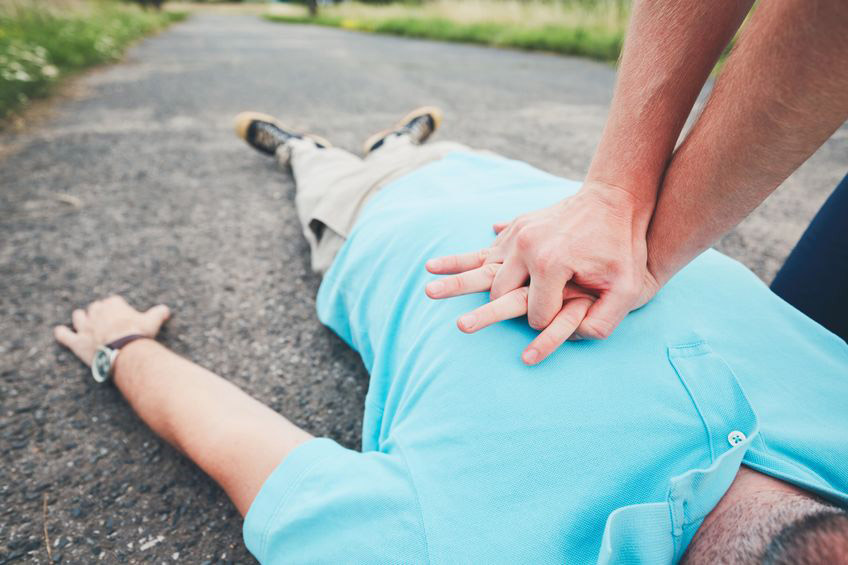Should we still perform CPR?
We have all had to rethink so many things since Covid-19 reared its ugly head. The way we administer CPR is one of them.
If you are trained in CPR or have been thinking about taking a class in CPR, the issue of safety has probably crossed your mind during the pandemic. It is only natural to be concerned.
As scientists have discovered, Covid-19 is transmitted via respiratory droplets, called aerosols. That is why social distancing and wearing a face mask are such important tools in stopping the spread of the virus. The data is not available at this time but someone conducting CPR could possibly be exposed to aerosols if a person in cardiac arrest is also infected with Covid-19.
Fortunately, you aren’t the only one who has been wondering about the question of safety in regard to CPR.
Is It Safe to Perform CPR?
The American Red Cross offers some guidance for CPR use during the Covid-19 pandemic. In the absence of hard data, they were working off the assumption that the chest compressions used in administering CPR would have the potential to generate aerosols, the airborne particles that can transmit the Covid-19 virus and other respiratory pathogens. Close contact with those aerosols might be associated with the spread of Covid-19.
Follow these 5 tips, courtesy of the American Red Cross, to help reduce your risk of contracting Covid-19:
- Call 9-1-1
- Wear Appropriate PPE
Because of the threat of transmission, the Red Cross recommends that you use the kind of personal protective equipment, or PPE, recommended by the CDC. Full-blown PPE would include the kind of gear you see healthcare workers wearing in all the Covid-19 news reports: eye protection, gloves, a gown and, of course, an N-95 mask.
Chances are you are not going to have access to that kind of equipment if you are suddenly called on to administer CPR. Fortunately, the CDC says that using a face mask is a good alternative in the absence of an N-95 mask.
If the person who is experiencing cardiac distress does not have a mask, the American Red Cross recommends that you place your mask on the victim’s face. That advice does not hold true, however, if you are lucky enough to have an N-95 mask rather than the kind of basic face mask most of us have been wearing. - Look, Don’t Listen, for the Breath
In your online CPR class or community CPR training, you learned that one of the first things you should do when assessing the condition of someone possibly in need of CPR would be to check their breathing. Since the coronavirus involves respiratory transmission, taking that step can be risky. The American Red Cross recommends that you rely solely on a visual assessment of the victim’s breath for the time being to protect yourself from the possibility of exposure. - Use Hands-Only CPR
Under normal circumstances, CPR combining chest compressions with breaths is the preferred method. But, as we all know by now, these are not normal times. Unless you know the victim and are relatively sure that they do not have Covid-19, it is best to limit your CPR efforts to chest compressions. - If Available, Use an AED
As far as we know, using a defibrillator will not, in and of itself, increase the number of aerosols. If you weight that against the proven fact that a defibrillator can save the life of someone experiencing cardiac arrest, the American Red Cross feels it is worth it to use the AED. So, if you have access to an AED, use it as you were taught in your CPR training course and as the manufacturer advises.
Fortunately, many AEDs currently in use feature hands-free methods of operation so you can avoid minimize your exposure. Nevertheless, if you have PPE available – such as a face mask and gloves – you should use it to protect yourself.
Do not be tempted to play hero and throw caution to the wind. Covid-19 is a serious threat. When you take the appropriate steps to minimize your exposure to the virus, you are not only protecting yourself, you are also helping to protect your family and your community by limiting the spread of the disease.
And, if you need to brush up on your compressions-only CPR techniques, you can take our FREE CPR Course or the FREE First Aid Course. Both are a great way to refresh your lifesaving skills at absolutely no cost – and both CPR classes are offered online so that you can take them from the comfort and safety of your own home.

